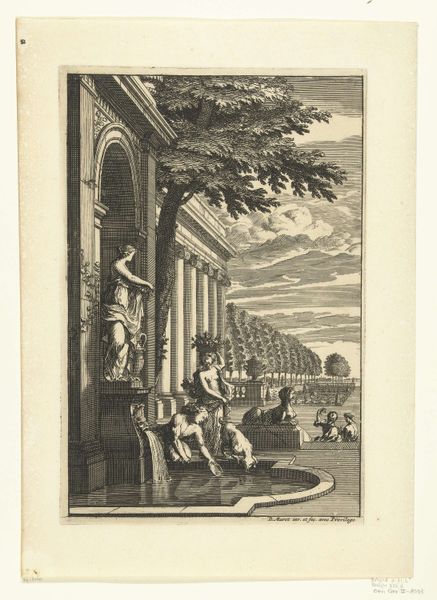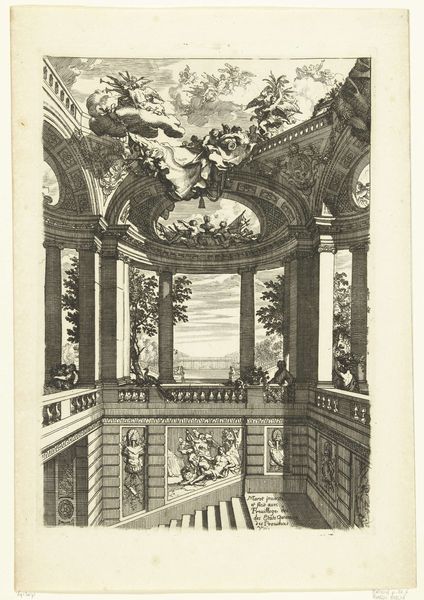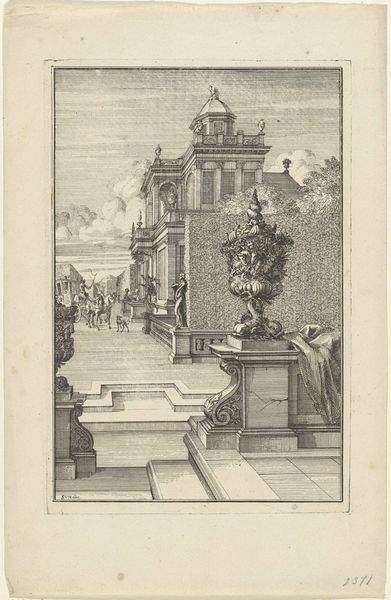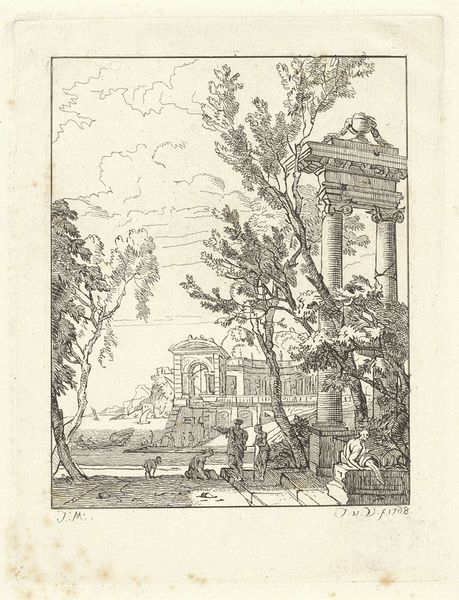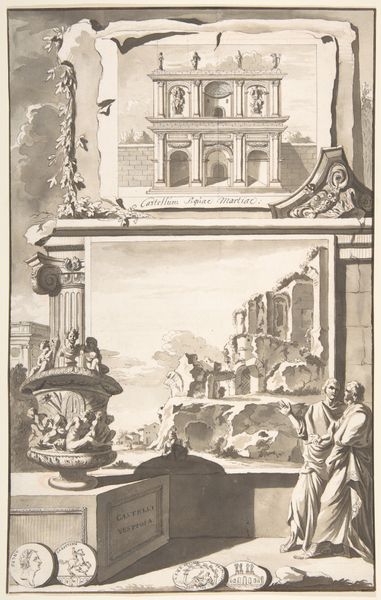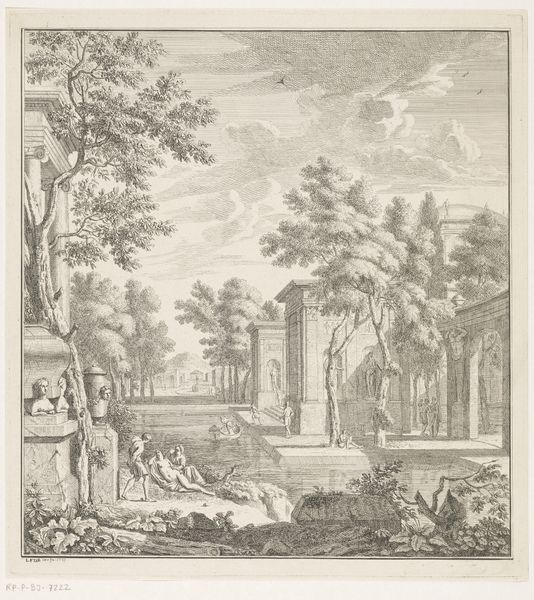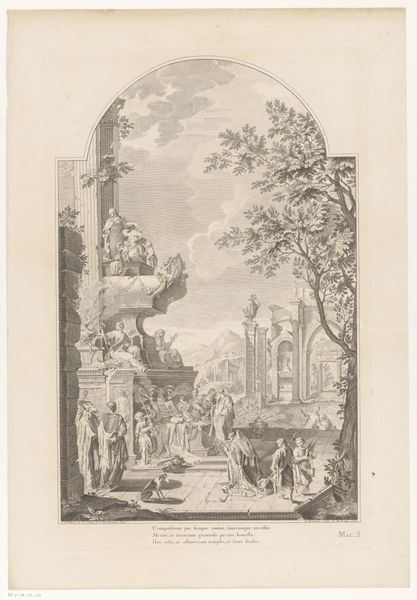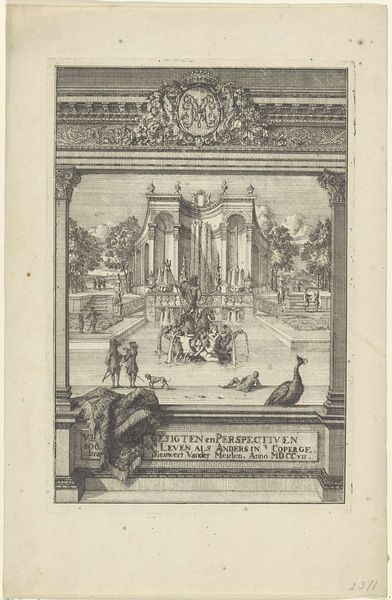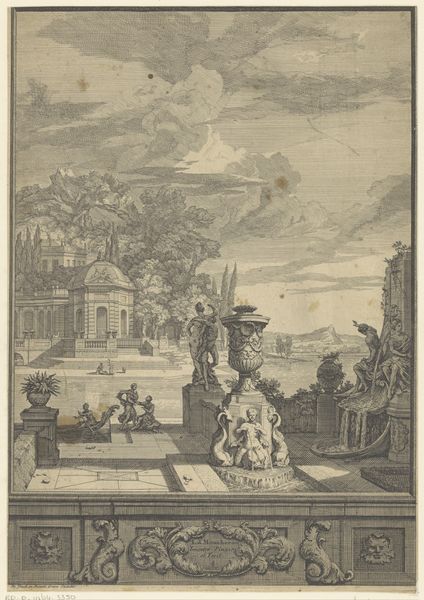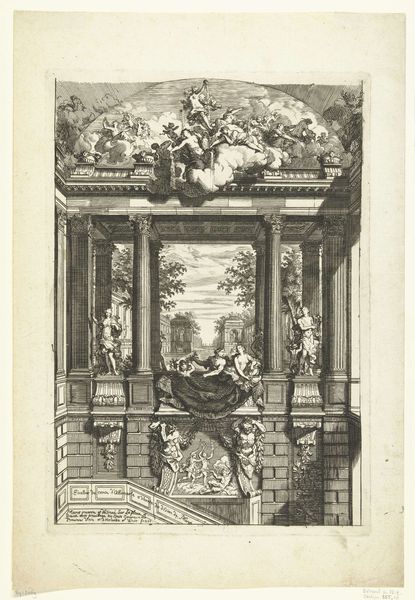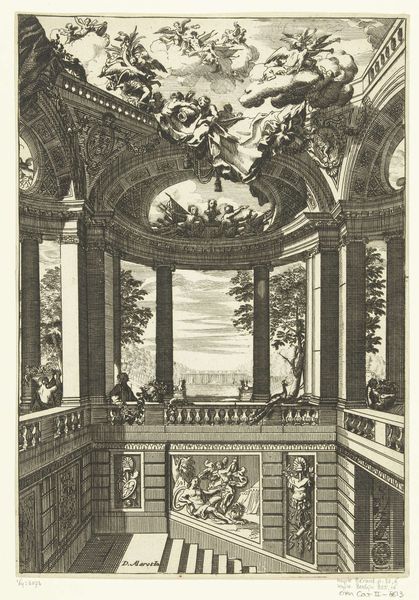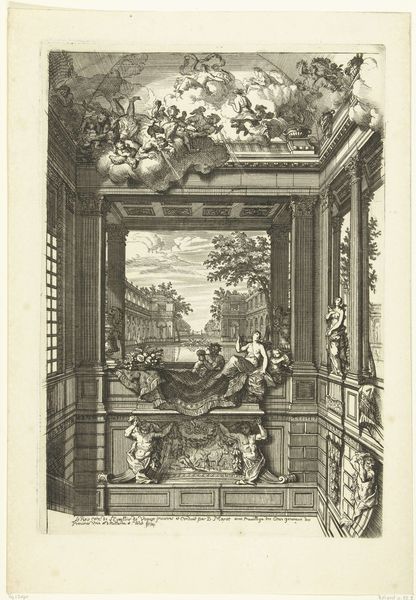
engraving
#
baroque
#
landscape
#
perspective
#
form
#
line
#
cityscape
#
engraving
Dimensions: height 251 mm, width 165 mm
Copyright: Rijks Museum: Open Domain
Curator: Here we have "Nouveau Livre de Paysages," or "New Book of Landscapes," an engraving by Daniël Marot dating from the early 18th century, somewhere between 1703 and 1712. Editor: Immediately, I'm struck by the composition—a checkerboard foreground leads the eye back to a detailed cityscape. It has an almost stage-like quality to it. Curator: That "stage-like quality" reflects Marot's influential role in shaping the visual culture of the court. He designed interiors, gardens, and stage sets. Editor: The architecture feels both grand and strangely unsettling. The lions on the staircase, the figures frozen in classical poses… it's a display of power, surely? Curator: Precisely. The controlled perspective, the symmetrical design – it all speaks to the desire to impose order on the natural world, a common theme in baroque art reflecting political ideals. Think of Louis XIV's gardens at Versailles! Marot worked for William of Orange, so you also see it representing the monarch’s ambition. Editor: I see recurring symbols: The staircase as a path to power and knowledge. Water as transformative change. It feels allegorical. Curator: Water could also allude to Dutch maritime power during the Golden Age—though by the time this work was created, that era was passing, but certainly still imprinted on the visual imagination. Note how it positions nature: not as an uncontrolled wilderness, but tamed and reshaped into formal gardens and cityscapes, even at sea with the bridge-fortress. Editor: So even this imagined landscape functions as a tool to convey certain messages of political stability and a ruling power that commands respect through carefully constructed visual vocabulary? Curator: Exactly. Though imagined, its architectural symbolism carried weight at the time and gave insight into Marot's architectural mind as the preferred interior designer to royalty. Editor: A fascinating example of how landscape can be far more than just a pretty picture. Curator: Yes, the artwork demonstrates that form always carries socio-political symbolism for those fluent in the language of visual imagery.
Comments
No comments
Be the first to comment and join the conversation on the ultimate creative platform.
